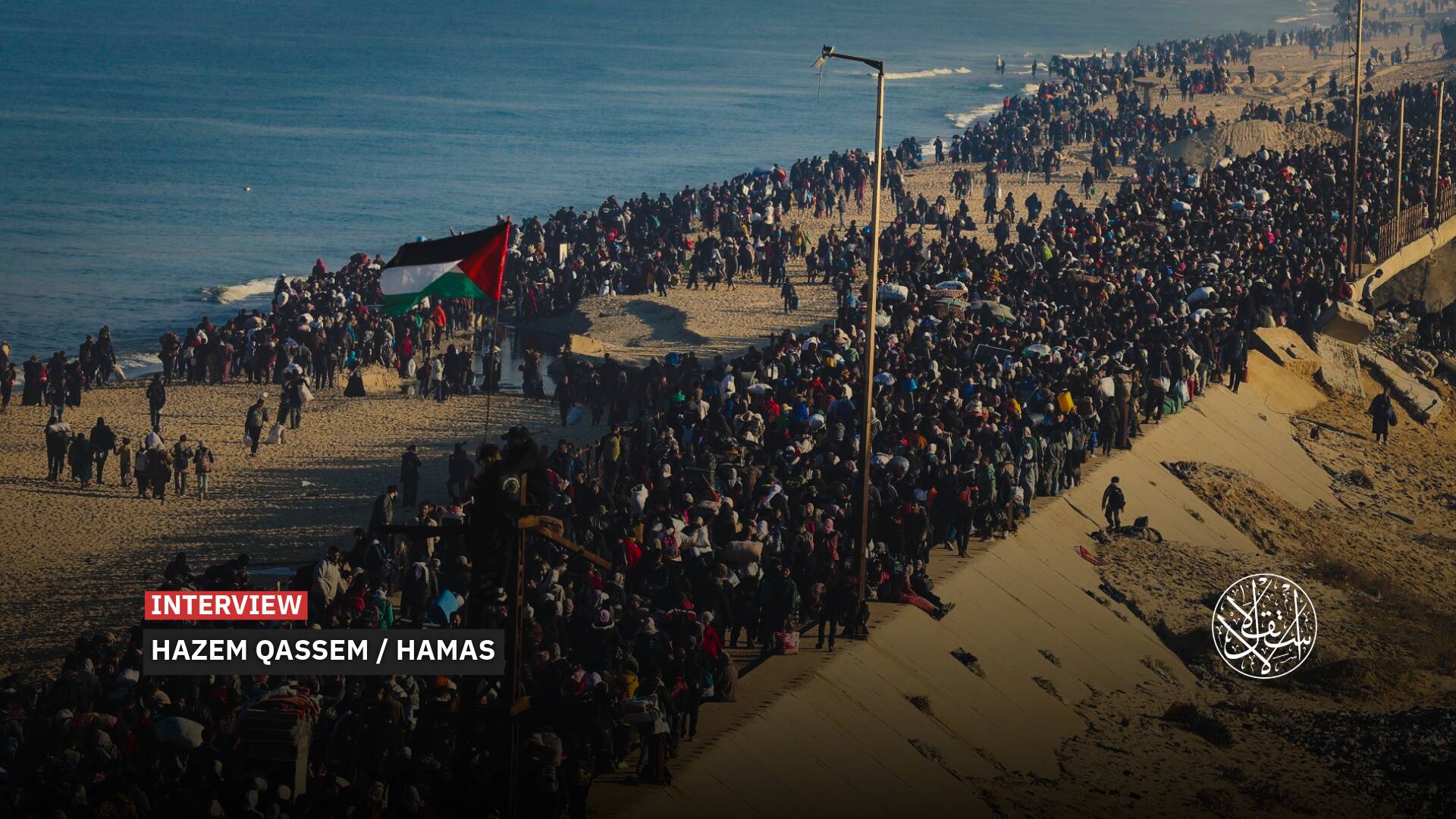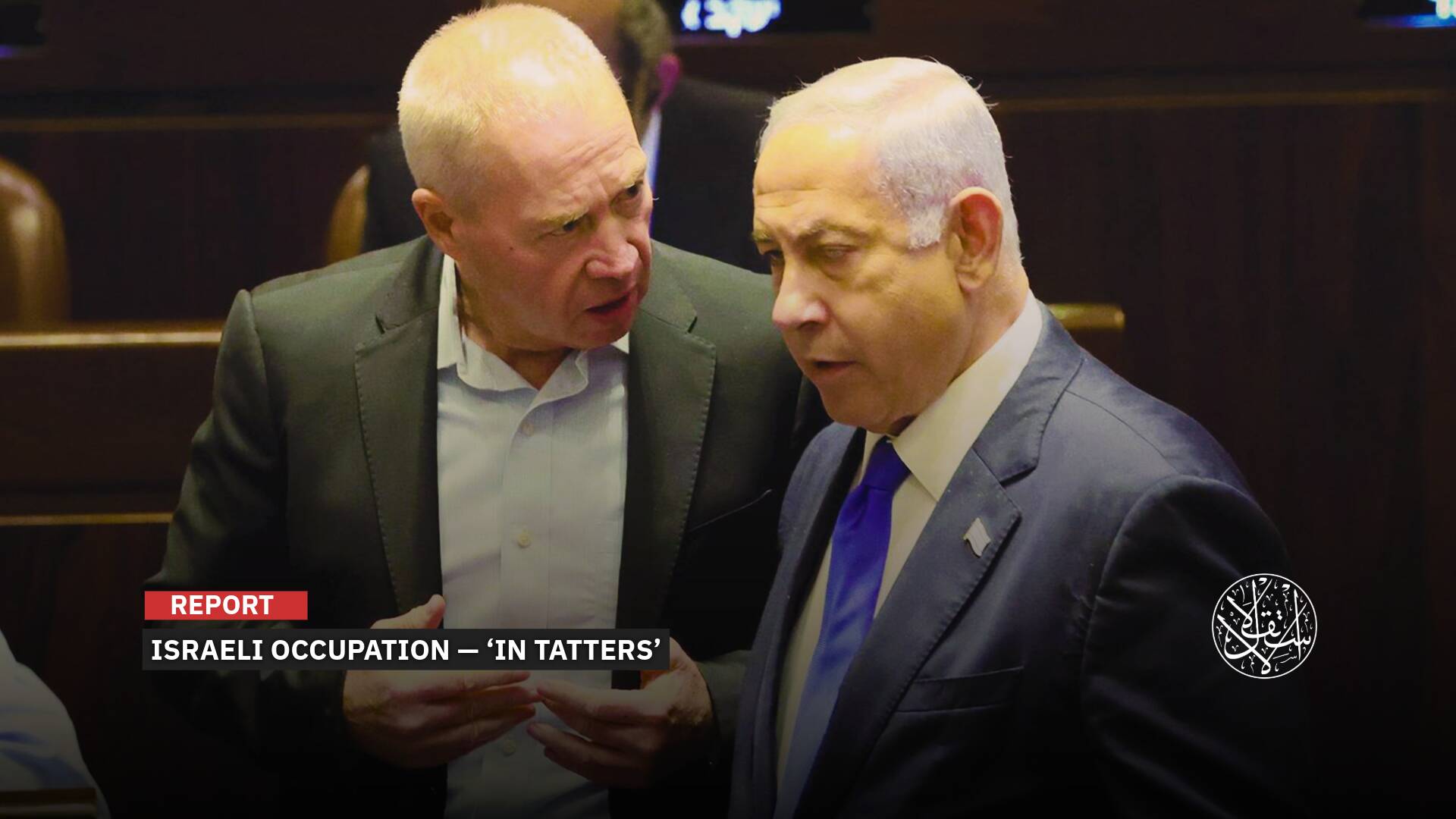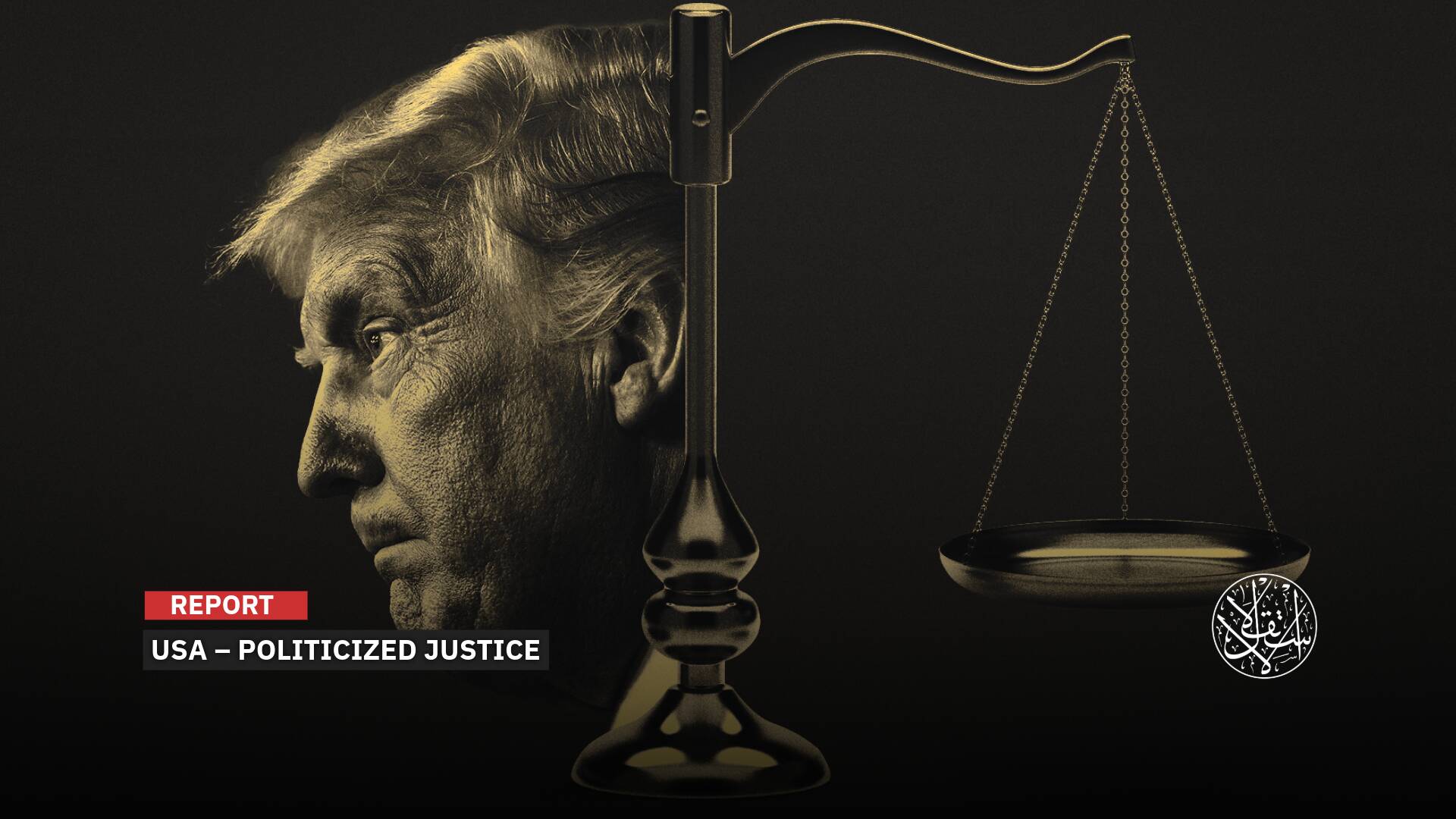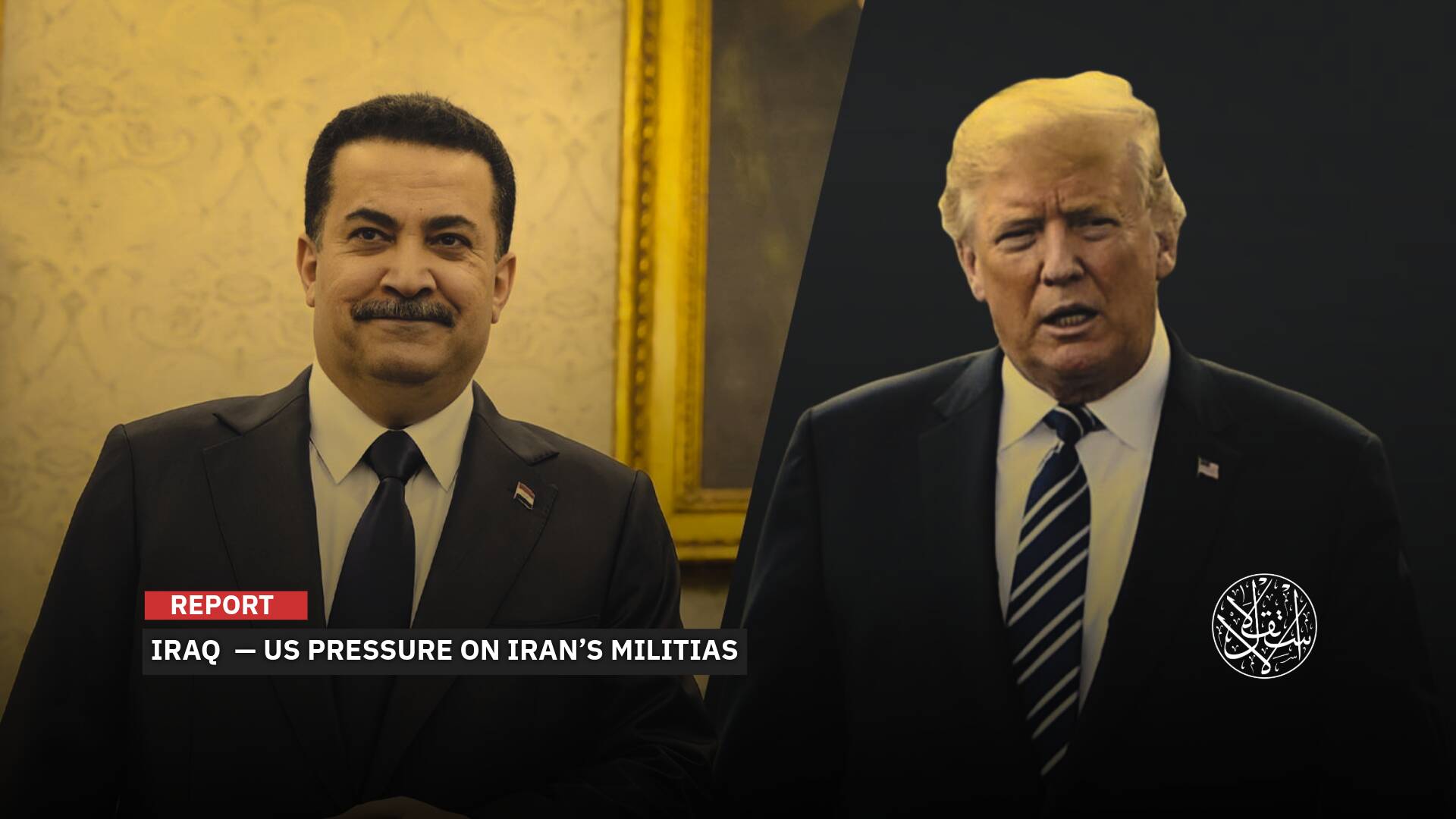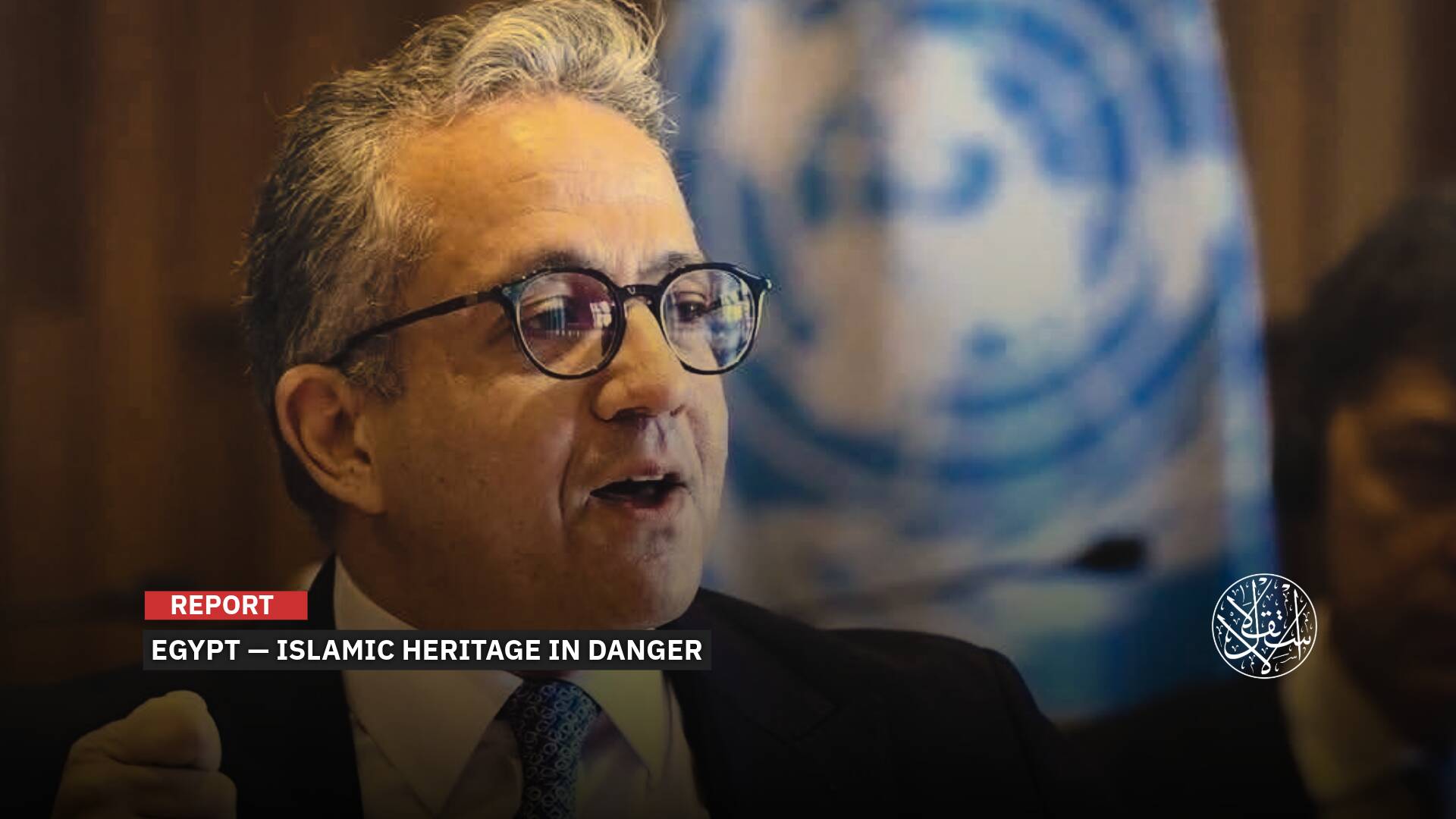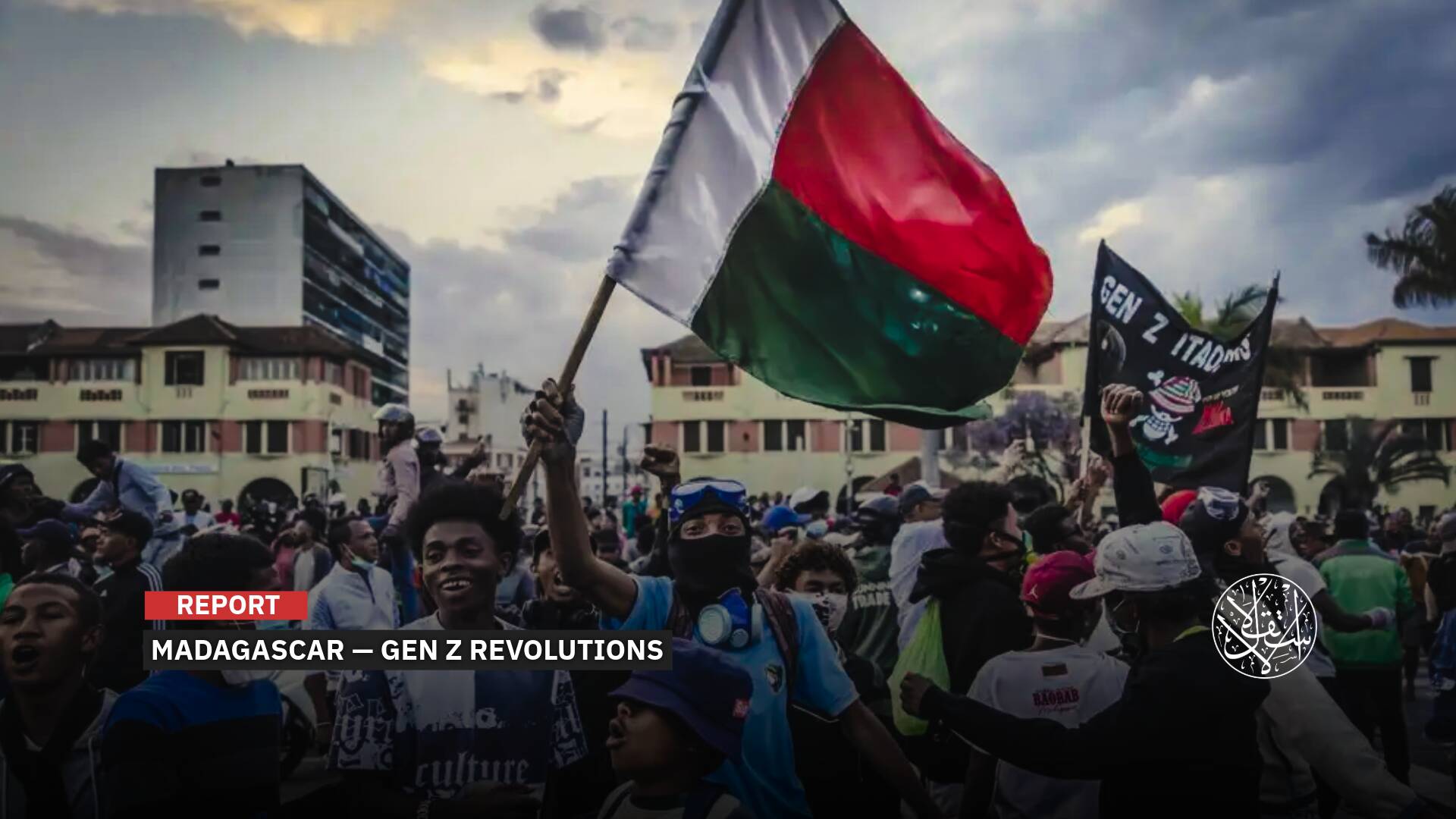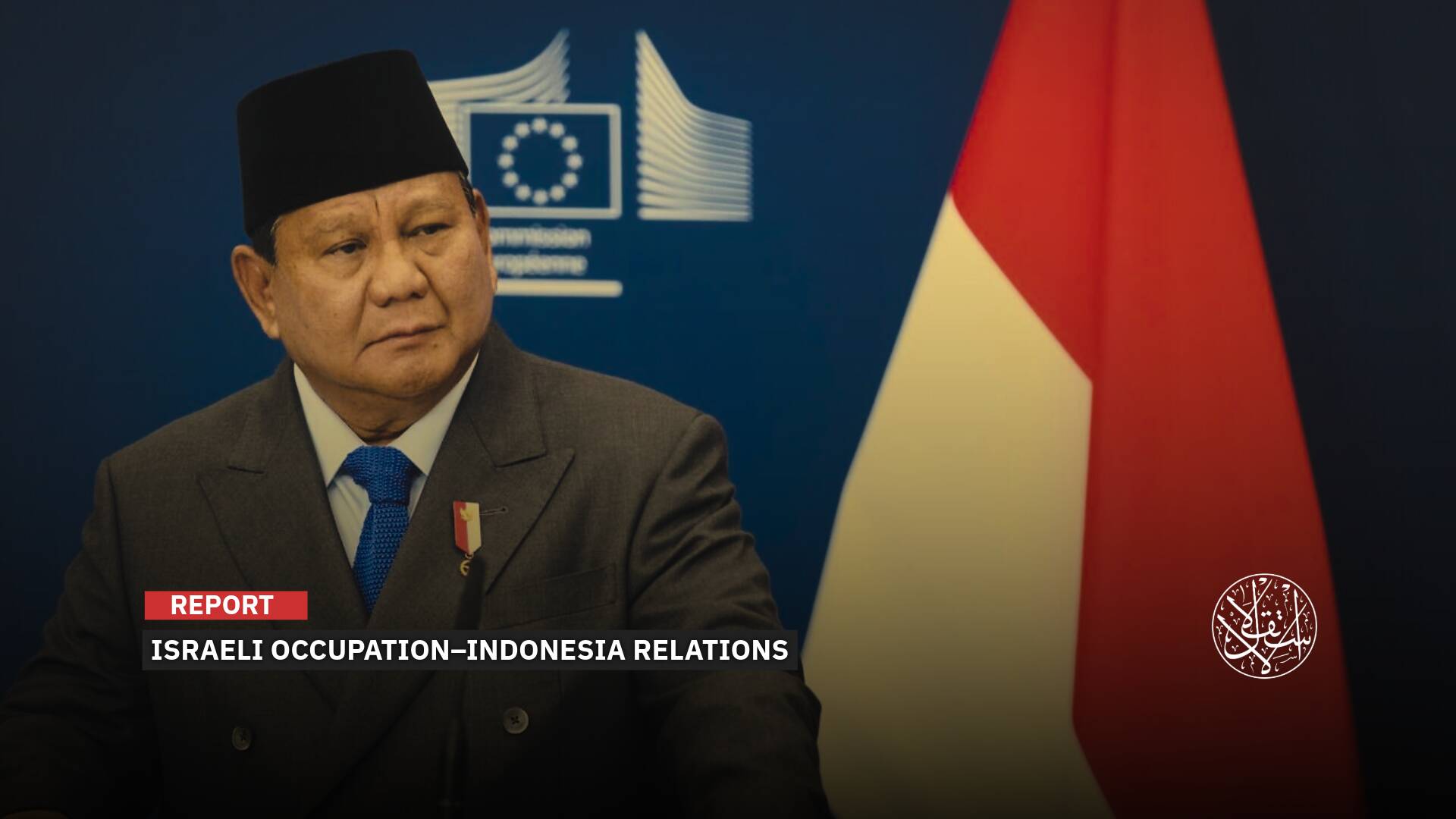Global and Regional Influence of Taliban’s Return to Kabul

Contents
Introduction
Section I: The positions of the Major Powers
a. America
b. China
c. Russia
Section II: The Regional Powers
a. Pakistan
b. Turkey
c. Iran
d. India
Section III: The bordering countries
Turkmenistan, Tajikistan, and Uzbekistan
Conclusion
Introduction
Reactions to the Taliban's return to power in Afghanistan differentiated between welcome and rejection, with many countries adopting the approach of cautious dealings with both sides. Indeed, the positions of the major powers varied in this regard.
While America behaved with a degree of covert hostility, Russia, and China, that were open to the Taliban since 2007 and 2010 respectively, opened the door for a reformist dialogue that did not hide the concern that the Taliban would be a gateway to the instability of neighboring countries.
Taliban reinsurance messages that instability will not extend to the neighboring countries, because the removal of the "Al-Qaeda" organization from Afghanistan makes the "Taliban" a local organization par excellence.
As for the regional and specific countries, most of their reaction is through dialogue with the "Taliban" and about the "Taliban.” It seems that the movement's attempts to reassure its neighboring countries paved the way, but it did not eliminate the state of distrust behind the first experience of the "Taliban.”
What are the features of the international situation? What are the directions of its development? The paper attempts to shed light on these two axes.
First Section: The Positions of the Major Powers
In this axis, we answer questions about the positions of the major powers regarding the Taliban movement's arrival at the presidential palace in Kabul, the repercussions of this event on the interventionist US foreign policy, and the reaction in both China and Russia.
However, there is one thing that unites all these countries as a common factor that determines the behavior after the arrival of the Taliban to power, which is their participation in confronting Al-Qaeda during the last period. While America and Russia were engaged in an operational confrontation, China's participation was purely intelligence.
The common benefit as result of this confrontation is that the world powers can be reassured that Afghanistan without “Al-Qaeda” organization is somehow “safe.” Since what remains in Afghanistan, i.e. the Taliban, has become a local movement, which is something that the regional neighboring countries can coexist with if the movement’s control of power is prolonged.
For now, let us discuss the divergent positions of the major powers.
In this context, observers point out that China and Russia both benefited greatly from the American presence in Afghanistan, and did not oppose it, for its positive impact on the stability and security of the region, despite the Taliban's failure to surrender.
a. America
In this regard, we are trying to answer the following questions: Why did the administration of US President Joe Biden withdraw from Afghanistan? What are the implications of this for US domestic foreign policy? What are its implications for the situation in Central Asia?
The headline of "The New York Times" was remarkable, noting that 20 years of the American presence ended as it began; the "Taliban movement" in power.
It was not too late for the American newspapers to submit an account statement for this zero-impact presence, quoting news agencies.
The title of the Associated Press report was "The Cost of the US War on Afghanistan in Lives and Dollars," in which it referred to the high human and material cost of this war.
According to the agency, the human cost of the war included (2,448) soldiers killed in Afghanistan, and (1,144) soldiers from the North Atlantic Treaty Organization (NATO).
In addition to (3,846) American contractors, (66,000) Afghan army and police forces, (47,245) Afghan civilians, (51,191) Taliban and other soldiers, 444 employees of relief organizations, and (72) journalists of different nationalities.
As for the financial cost, according to the agency, for both wars in Iraq and Afghanistan, it amounted to $2 trillion, pointing out that these two wars were waged through credit or borrowing, and not through direct spending (Cash) from taxpayers' money.
It also hinted that the value of the expenses and benefits of these two wars to be paid by 2050 amount to about (6.5) trillion dollars.
The study of these three areas rely on reading the impact of the American withdrawal, and the perceptions of these forces to deal with the future situation. To understand Biden's decision to withdraw troops from Afghanistan, we must return to the discussion that took place more than a decade ago, during the early years of former US President Barack Obama's rule.
During this period, the new Obama administration debated whether to increase US forces in Afghanistan after nearly 8 years of war that had failed to quell the insurgency of Taliban forces.
The Pentagon requested in early 2009 to send 17,000 additional soldiers, and after they got these, they asked for an additional 40,000 soldiers to weaken the Taliban and support the Afghan government.
Obama's vice president at the time, current US President Joe Biden, was one of the biggest skeptics of the military's recommendations, and repeatedly raised his perception that the Pentagon's strategy was unlikely to lead to victory.
Biden's perception did not change during the rule of the next president, Donald Trump, which is due to his follow-up of the course of interactions in the Afghan arena, given the resources that were available, and the huge amount of spending that Washington spent there.
As for the repercussions of the withdrawal decision on the American political vision, we monitor it briefly from two angles. The first relates to the American interior sphere.
It can be said that the American interior is compatible with the decision, and with stopping the credit bleeding, which represents a burden on the American budget, now and in the future, in addition to Washington's need to increase domestic spending.
It is a perception linked to the nature of the US administrations emanating from the Democratic Party, and the Trump administration had promised to complete this withdrawal, although time did not help Trump, but it had begun the path of direct negotiations with the “Taliban” through the Qatari sponsor in Doha.
As for the interventionist foreign policy, it cannot be said that it will be affected by this decision, from two angles. The first is that the Biden administration appears to be one with a clear interventionist mood.
This can be seen from the perspective of the military presence in Europe, the Mediterranean, the Black Sea, the Pacific Ocean, and other regions, which is represented by the slogan "America is back." Which indicates that the withdrawal decided by Biden, was purely an end to what he saw as "a useless plan,” and the absence of its feasibility reaches the point of failure, which was artfully formulated by the "New York Times.”
Ending "useless" experiences, according to the Biden administration's proposal, is a step among several scenarios to reduce unnecessary defense expenditures, all of which depend on balancing the axes of "readiness,” "investment" and "structure" along with other measures such as restructuring the budget Defense.
The current scenarios, one of which may push the Pentagon to spend less on the structure, which in turn will reduce the pressure on the other two categories (readiness and investment), while giving priority to spending on readiness.
There are trends within the US administration that believe that there are alternatives to the presence in Afghanistan, in the face of the rising Russian bear, and the promising options tend to avoid the containment policy, which was followed during the Cold War.
To replace it with a strategy based on inflicting heavy political, economic, and military losses on Russia that Moscow cannot bear in the long term, due to the presence of security and military inconveniences on its borders.
On the other hand, adhering to America's protection of its allies and guaranteeing their interests, and responding to Russia's actions with policies that push the latter towards submission and adopting positions that are more acceptable at the international level, especially on the part of Washington's allies.
The voices of experts from various institutions, most notably the Heritage Foundation, are calling for the American response to be characterized by rationality, prudence, and deliberation, and not to be drawn into useless military adventures.
On the other hand, experts demand that the thrust of the American strategy should be based on defending the values that Washington adopts, such as freedom, the rule of law, and renunciation of dictatorship.
Although this vision appeared in 2016, it represents the most prominent axes of the Biden administration's work, which sees China as a "competitor" and a “threat” but does not see it as an "enemy" or a "serious threat.”
However, the US presence in the Pacific Ocean, in the Mediterranean, and elsewhere, could constitute a future mechanism to curb the Belt and Road plan, transform its infrastructure into regional resources for the countries in which it was implemented, and prevent it from being turned into an instrument of hegemony.
This is in addition to following the same trends with Russia and raising the risk of regional cooperation in various places with Russia.
The process of restoring relations with Washington's allies around the world, especially in Asia, is one of the Biden administration's entry points to confront China indirectly.
In the same context, it is possible to understand the main reason why America left the weapons that it sent to the various Afghan governments, a huge arsenal, most of them of a land nature, but including 200 combat aircraft.
Although the Biden administration preferred to withdraw from Afghanistan, it will take advantage of the weapons left.
On the one hand, this weapon will worry the neighboring countries, prompting them to buy it or to destroy it. If Taliban accepts to sell it, it will become without strategic power, and can be faced through the battles of regular armies.
But if it refuses to sell it, this will complicate the regional scene, and will lead to an atmosphere of mistrust between it and the neighboring countries.
If it remains, however, it is a two-way asset. The first is that it is a symbol of the identity of the Afghan armament pattern, and it can lead towards the direction of military dependence on the US in the future.
The second is that it could be used for another force that America plans to support to confront the Taliban, including the force of Ahmad Massoud, which witnessed American logistical support during the period after the Taliban’s arrival in the capital, Kabul, to the extent of carrying out an “airdrop” in the region, after Massoud demanded military support.
That measure may involve an American offering to provide military advice to Massoud, in order to stand firm in the face of the Taliban, which would send an image of instability, which could lead to a relatively popular mobilization against the movement, as Washington hopes to recreate history.
Massoud may use American advice, and only aim to preserve the "self-governing" status that the "Panjshir" province enjoyed throughout the first two decades of the 21st century.
b. China
There is no doubt that China has "some concern" about the existence of an unstable state, to the point of failure on its borders, run by the Taliban, especially since its failure is due to ethnic turmoil on the one hand, and the presence of a government that had a previous sponsorship of an organization as dangerous as "Al-Qaeda.”
Of course, added to this is the "drug trade", which is the trade in which Afghanistan was involved due to the nature of the cultivation of the sources of narcotics, which do not need large water resources, which suited the dry nature of Afghanistan.
However, the threat of the unstable government in Afghanistan poses a threat to the neighboring countries, especially those who are defiant of Afghanistan, which are countries that have strong relations with China.
Whether it is the northern countries: Tajikistan, Uzbekistan and Turkmenistan, or its eastern neighbor, which is the most prominent ally of China: Pakistan.
In addition to Iran, which enjoys strong relations with China, the latter has pumped huge investments into these countries, part of which is related to the "Belt and Road" initiative.
However, Chinese fears may be mitigated by three factors, the first of which is related to the strong relationship between the Taliban and Pakistan, which is one of China's southern allies.
Pakistan enjoys great influence within the Taliban movement, starting with its role in supporting the process of establishing the movement during the period between 1994 and 1996, in addition to Pakistan's current role, with a vision of the future, in supporting the movement.
During the period after the collapse of the Soviet Union, Pakistan's word was present in establishing stability, or instability, in Afghanistan, which makes Pakistan an important ally of China regarding the Afghan issue.
The second factor is related to the Taliban movement itself, which indicates that it has acquired an acceptable diploma in diplomacy, and that it is not the Taliban of yesterday, which did not know the language of negotiation.
This perception does not undermine the failure of negotiations between the movement and America, which is determined by many determinants, including what is subjective in the movement’s thought and culture. Whether the culture of the movement itself with a legitimate reference that rejects the “infidel” occupation, or the culture of the tribal society, which rejects the invasion, and preserves the concept of revenge, and cherishes the concept of dignity.
On the other hand, the movement wants to avoid China and its intelligence services joining the measures that will be taken to influence the future of Afghanistan under the leadership of the movement.
The third factor is related to the second from the viewpoint that the new Taliban now knows the language of interests, and realizes its strategic importance on the one hand, and its economic importance as a mine of rare minerals.
This is exactly what China needs and received a response from the movement that relied during the past 20 years on Chinese technology in the face of the American presence.
For all these factors, Chinese Foreign Ministry spokesman Zhao Lijian announced that Beijing intends to continue helping Afghanistan, after the Taliban imposed its control over it.
Referring to his country's future role, he added, "We will continue to assist efforts to restore peace in Afghanistan and will provide all possible assistance to this country to stimulate its social and economic development."
However, the Chinese spokesman added that his country will not establish new diplomatic relations with Afghanistan, until after the formation of a "tolerant and open government there that adequately represents the interests of its country."
The Taliban had pledged to China, earlier, during a visit by a delegation from the movement to Beijing, that it would not allow the territory of Afghanistan to be used as a base to launch attacks targeting the security of other countries.
However, considerations of reassurance did not prevent the provision of a degree of military preparations for the possibility of a security vacuum as result of any chaotic situations that may arise from the availability of resistance to the Taliban government.
Perhaps this is what prompted China and Russia to organize their largest joint maneuvers on August 9, 2021, the "Cooperation 2021" maneuvers, which included more than 10,000 soldiers, combat aircraft and artillery, and the establishment of a joint command center.
Chinese Defense Ministry Spokesman Wu Qian said that these exercises are aimed at consolidating and developing a comprehensive strategic partnership between Russia and China, maintaining regional peace and stability, and emphasizing the fight against terrorism.
He made it clear from this statement that the maneuvers come in response to the transformations in Afghanistan, and this trend is supported by the fact that they came days after the meeting of Chinese President Xi Jinping and Russian Vladimir Putin in Tajikistan.
c. Russia
The Russian position is similar to the Chinese position about the movement, although it has been banned in Moscow since 2001 until now, under the influence of the threats of former US President George W. Bush.
Yet, the complexities of politics imposed a different situation, and the surprise was that at the end of 2016, the Afghan government and US leaders expressed concern about the deepening of relations between Russia and the Taliban, accusing Moscow of providing support to the movement fighting to overthrow the US-backed Afghan government.
With the succession of events on the Afghan arena, Russia initiated the movement's steady control of Afghan cities to declare that "terrorist organizations" may take advantage of the vacuum in Afghanistan to launch attacks against Russia and other Asian countries.
Soon after the movement's capture of the Afghan capital, Kabul, Russian Foreign Minister Sergei Lavrov announced his welcome to the initial statements made by the movement, describing them as a positive sign.
Meanwhile, high-ranking Russian military officials were satisfied that Russia "within the framework of the Collective Security Treaty Organization, will provide assistance, in the event of the emergence of a threat of aggression or a real aggression."
He added that there are possible formulas for the response, and referred to the Russian military maneuvers with Uzbekistan, as well as the readiness of Tajikistan, Uzbekistan, and Kyrgyzstan to fight today.
Russia had launched joint (Russian-Uzbek) military maneuvers, on August 2, 2021, in the mountainous "Termez" training field, in southern Uzbekistan, on the border with Afghanistan. It lasted five days, with the participation of more than 1,500 soldiers.
Russia followed these maneuvers with a larger one with China, which we talked about earlier.
However, the surprise in this file is what was reported by the "TASS News Agency" about the Special Representative of the Russian President, Zamir Kabulov, on Afghanistan, August 16, 2021, that the Russian talks with the Taliban preceded these maneuvers, and that the Russian ambassador in Afghanistan managed these talks smoothly since 2007.
This statement was preceded several days by another statement from Lavrov, in which he praised the position of the movement's negotiators, describing them as "reasonable people."
He added: "It is wrong to try to maintain the current ambiguity for as long as possible, and there are forces in Kabul who want this to happen because it allows them to remain in power."
In Kabulov's interview, the latter stated that Russia does not see the Taliban in Afghanistan as a threat to Central Asia.
He added that Moscow had paved the way in advance to establish contacts with the movement, and that Russian officials were already in contact with Taliban officials through the Moscow embassy in Kabul.
The Russian position was disclosed through a statement by the spokeswoman for the Russian Foreign Ministry, Maria Zakharova, that her country prefers to reach a negotiated peace in Afghanistan; This cannot happen without establishing relations with all parties, including the Taliban.
Spectra of analyzes related to the Russian position begin with observers from the repayment of the debt to America, which helped the "Afghan Mujahideen" to expel the Soviet Union from Afghanistan, and even Russia's desire to prevent the evils of the movement by establishing relations with it.
However, the Russian-Uzbek military maneuvers on the border with Afghanistan were not directed against the Taliban as much as they were directed at staving off the repercussions of any security vacuum that might occur due to the transitional phase in Afghanistan.
Second Section: Regional Powers
This section answers the question related to the repercussions of the US withdrawal from Afghanistan on the behavior of the regional middle powers towards Afghanistan. We identify these forces in Pakistan, Turkey, Iran, and India.
As a common factor among all the regional powers, we can point out three mutual features in the relationship between these forces and the Taliban movement.
The first of these features is the involvement of all these forces, just like the major powers in a dialogue relationship with the Taliban as the next, and perhaps the only, force of power in Afghanistan's future.
The second of these features is represented in the start of these forces to conduct a dialogue among themselves regarding Afghanistan's future.
These conversations took place in the form of paths, as Pakistan negotiated with Iran and Turkey, while India negotiated with Iran, in addition to the paths of dialogue with the major powers.
The third feature is the reaction of the Taliban movement after its arrival at the presidential palace, it issued positive signs towards all neighboring countries, including Iran and India.
The details of this section are as follows:
a. Pakistan
Among the most important phrases that distinguish the relationship between Pakistan—current President Imran Khan—and the Taliban is Khan's statement that “the Afghans broke the shackles of slavery.”
This was considered by the American “Washington Post” as a kind of view of the fundamentalist Taliban movement as a model of a kind of enabling authenticity.
Complex calculations govern both sides, despite the historical relationship between Islamabad and the Taliban, within the framework of the experts’ talk about the Pakistani support for the movement during the establishment phase. Also, although Pakistan was the first country to recognize the first government of the movement in 1996.
Despite the Pakistani President's refusal to provide logistical support or anything less to the Afghan government headed by Ashraf Ghani, and despite the strong influence of Pakistan in the movement.
However, this does not mean that the relationship between the two parties is devoid of complex strategic calculations related to protecting Pakistan's stability and regional integration.
One of the most complex calculations between the two parties is Pakistan's early declaration of its refusal to seize power by force in Afghanistan. It called on the Taliban and the Afghan government to make mutual concessions.
There is also an indication that Pakistan has closed the border crossings between the two countries, with the movement's succession of control over the eastern border cities, the last and most important of them was the Torkham crossing, which was closed following the movement's control of the eastern city of Jalalabad, which is located on the main highway leading to the capital, Kabul.
Besides this, Pakistan was late in recognizing the Taliban government, and the Pakistani Foreign Minister, Shah Mahmood Qureshi, announced that “his country will recognize the Afghan Taliban government when the time is right, in accordance with international agreements and realities on the ground.”
Experts believe that there are several fears on the Pakistani side, the first is the fear of the Pakistani Taliban movement, which still represents the obsession of secession related to the Pashto ethnic.
The leader of the Pakistani Taliban movement, Noor Wali Mehsud, praised the achievements of the Afghan Taliban. He noted that relations with the Afghan Taliban are based on brotherhood and sympathy.
He said: “They are still fighting alongside the Afghan Taliban, and they are at war with the Pakistani security forces, and they wish to control the Pakistani tribal border areas and achieve its independence.”
In this context, observers believe that the danger for Pakistan is that “if the Afghan Taliban are stronger, they can actually reduce their cooperation with the Pakistani intelligence in controlling the Pakistani Taliban, which helps the latter achieve its goals.”
Despite these concerns, there are several indications that Pakistan supports the movement, especially intelligence and military support. This was expressed by Afghan President Ashraf Ghani himself; it is the support that contributed to the arrival of the movement to what it has become.
b. Turkey
Afghanistan represents for Turkey an area to support its presence in Central Asia, in a formula that produces a state of consistency in the vision among the countries of this region, and in protecting the mutual interests between the countries of the Islamic world, or “at least considering the presence of a wide Turkish race among the many ethnicities that make up Afghan society,” as stated by Turkish President Recep Tayyip Erdogan.
This tendency makes the Turkish National Council (the assembly of the Turkic-speaking countries) set out to provide a platform that accommodates the Afghan ethnicities.
It also absorbed the Pakistani ethnicities, in order to build an Islamic international that supports the population of the Islamic world in the face of the unjust international organization, which followed the victory of the Allies in World War II.
Therefore, more than a week before the fall of the capital, Kabul, the Turkish president put forward the idea of meeting the leader of the Taliban movement in Turkey.
On the other hand, Ankara wants to benefit economically from Afghanistan, within several files, including mining, energy, and reconstruction.
Therefore, Turkey may have reopened the door for cooperation by offering to manage Kabul Airport in favor of the Taliban, training the movement's cadres to manage this file as a starting point for cooperation.
Perhaps this is the reason for the positive statement of the Turkish President when he recently announced Turkey's willingness to cooperate with the Taliban.
In a gesture to remove the spirit of defiance from the behavior of the movement's leaders, Erdogan pointed out that “standing next to Afghanistan through weal and woe is one of the requirements for fulfilling the covenant and brotherhood, whichever is the ruling party.”
“Turkey is ready for all forms of cooperation for the welfare of the Afghan people, the safety of our people (Afghan Turks) and the interests of our country,” he added.
It also includes the training of military and police forces, which is an area—from the point of view of the study—that may be related to the American weapons left in Afghanistan without destruction, which the Americans may have wanted to use as a symbol of the Afghan military identity later. This is something—from an American point of view—that Turkey can participate in achieving.
From the Taliban point of view, it announced its welcome to cooperate with Turkey, as previously announced in the interest of each of the major, regional, and neighboring countries.
The Taliban had previously opposed the Turkish forces taking over the administration of Kabul Airport under the umbrella of NATO and demanded—very clearly and forcefully—the departure of the Turkish forces.
However, this step by the Taliban did not mean excluding Turkey from the circle of cooperation. The movement’s spokesman, Zabihullah Mujahid, said in a media interview: “What we want is for Turkey, which came to Afghanistan under the NATO umbrella 20 years ago, to withdraw. When we need Turkey, we will talk to it directly and to the Turkish people. We want Turkey as an independent country, we don't want it as part of NATO.”
As Turkey tends to build a defense cooperation relationship with “Afghanistan – Taliban,” it may have obtained facilities from Tajikistan to use one of the former Russian military bases to meet the requirements of rapid intervention, which reveals a “Turkish – Tajik” consensus regarding the future management of the situation in Afghanistan.
c. Iran
Iran is recently moving towards building a friendly relationship with Turkey and Pakistan, in order to achieve stability in the post-Taliban era. The pursuit of this outreach reflects Iranian concern but appears welcoming to the movement.
Regarding the Iranian position, Tehran welcomed the withdrawal of US forces from Afghan soil, it considered it as a victory for the resistance front, and for its project to remove the American presence from its neighborhood.
Observers point out that the US withdrawal came amid escalating differences between Iran and the government of Ashraf Ghani; what constituted a motive for rapprochement with the Taliban as a matter of putting pressure on the Ghani government.
Tehran has previously hosted rounds of dialogue with the movement's leaders within an (Afghani-Afghan) framework; what was considered—at that time—a qualitative development in the relations between the two sides.
Even today, there are significant forces in Iran that sympathize with the Taliban movement, among them were leaders in the Revolutionary Guard who saw a wide range of common interests between the movement on one side and Iran on the other, most notably, the opposition to the US presence in the region.
On the other hand, however, the prospect of Taliban domination of Afghanistan worries Iran; as the previous experience of the movement’s control of the reins of government in Afghanistan portends many dangers and challenges to Iranian interests in this country, in addition, chronic trouble regions may form close to the Afghan-Iranian border.
Therefore, Iran implemented several precautionary measures, such as evacuating the Iranian consulate in Mazar-i-Sharif; despite the Taliban's assertion of respect for diplomatic missions and declaring a state of high alert in the ranks of the Iranian army and the Revolutionary Guards on the eastern borders, after the Taliban took control of the border crossing in Herat.
Tehran also sent additional military equipment to those border areas, and it supported the 5th Air Defense Base and the 14th Air Base of the Iranian Army in Mashhad with combat equipment.
d. India
The first Indian reaction to the Taliban's advance towards the capital, Kabul, was apprehension, as part of the regional dialogue on the Taliban's re-entry to power, India has participated in regional dialogues on this issue.
Indian External Affairs Minister Subrahmanyam Jaishankar made diplomatic visits to Iran and Russia to discuss developments in Afghanistan and proceeded to build a dialogue path with the movement.
When the movement nearly finished capturing the city of Mazar-i-Sharif, India even began evacuating its nationals and embassy staff.
The features of the Indian policy in Afghanistan can be summarized in several main features:
The first of these features is to combat the influence of its traditional opponent, Pakistan.
The second feature is to prevent Afghanistan from becoming a base for extremist groups hostile to India.
While the third, more recent feature of Indian concerns is its concern about the status of Kashmir, in light of the border tensions that concern Pakistan on the one hand, and China on the other.
Finally, the fourth feature is the impact of the previous American presence in Afghanistan, and the strong alliance relationship between India and America, which prompted Washington to give India a share of the reconstruction of Afghanistan.
What is remarkable about this latter case is that the Taliban's efforts to allay regional concerns included a call for India to complete reconstruction projects in Afghanistan.
The Taliban's behavior towards India is part of the movement's general diplomatic strategy in issuing broad-based positive statements towards all neighboring countries, with the allocation of major and medium powers to it, in an attempt to overcome obstacles after the formation of a government to manage the affairs of the country.
Third Section: Neighboring Countries
We can say that a widespread state of anxiety swept the neighboring countries of Afghanistan, these are Tajikistan, Uzbekistan, and Turkmenistan. Pakistan and Iran were dealt with in the previous section.
In this context, we can note three basic features for expressing this concern.
On the one hand, we found these countries rushing to hold consultative meetings with the major powers, Russia, and China, on Afghanistan's future, and its impact on the future of these countries.
The most prominent of these dialogues was that Tajikistan hosted a direct dialogue between the Chinese and Russian presidents, while the two parties are competing for presence in Tajikistan, Uzbekistan and Turkmenistan also held separate talks.
On the other hand, Russia took the lead on behalf of these countries, especially Tajikistan and Uzbekistan, given the geographical dimension of Turkmenistan, and the strongest Turkish extension in it.
In this context, the Russian presidential envoy to Afghanistan, Zamir Kabulov, said in a media interview with the Russian TASS Agency: “Moscow will face militants from Afghanistan if they enter the territory of Tajikistan, Uzbekistan or Kyrgyzstan.”
In the same context, the former chief of staff of the Russian army, General Yuri Baluyevsky, stated that “Russia may use the (Tupolev-22MZ) long-range bombers in the event of an attack by the Taliban on the countries of Central Asia.”
As for the third feature in confronting the neighboring countries of Afghanistan is represented in these countries taking part in maneuvers with the major powers in the region.
Uzbekistan participated in direct joint military exercises with Russia, August 2, 2021, in the mountainous (Termez) training field, in southern Uzbekistan, it took five days with the participation of more than 1,500 soldiers.
Uzbekistan and Tajikistan also participated with China and Russia in their largest joint maneuvers on August 9, 2021. It is the (Cooperation 2021) maneuvers, which included more than 10,000 soldiers.
Conclusion
The situation in Afghanistan remains unresolved, and the future remains dependent on strategic decisions that the Taliban must take. The strategic decision also remains determining whether the Taliban will continue to rule or not.
On the one hand, America plans, after a conscious withdrawal, to plunge the Taliban into civil and regional confrontations through several methods, most notably the weapons abandoned to the movement. These weapons may be a source of saving the Taliban, as well as a source of plunging them into several regional problems.
On the other hand, China and Russia tend to deduct a large part of their share from Afghanistan now, not tomorrow. Especially after they helped the Taliban in the task of eliminating “al-Qaeda” in this country, which reassured them of the repercussions of this, considering that the Taliban is a local movement and does not have a tendency to be global, as is the case with Al-Qaeda.
This does not preclude them from making military preparations to deter the independence tendency of the Taliban, or the readiness for any possibility of a security vacuum in Afghanistan for any reason.
As for the regional powers, they all participated in a state of dialogue with the Taliban, in the case of another interfaith dialogue with the major powers about the Taliban.
While each reflects deep concern about the movement, with the possible exception of Turkey, these parties make accurate calculations of their interests and concerns, in light of the welcome signs issued by the movement towards each of them, including India and Iran.
The welcome signs from the Taliban are directed to everyone without exception, and the foreign ministers of China, Russia, Turkey, and Pakistan have previously stated, expressing the movement's negotiating intelligence, this reflects a clear development in the movement, which represents a clear steadfastness of the principle, taking into account the interests and concerns of neighboring countries.
By sending its positive and reassuring communication messages, the Taliban seeks to achieve internal stability more than other goals. It also seeks to avoid the negative impact of all these parties on the future of their presence in power.
As for the neighboring countries, Uzbekistan, and Tajikistan, as well as Turkmenistan, adhered to the side of dependence on Russia, where the latter took hostile statements on their behalf.
Russia and China used Uzbekistan, Tajikistan, and Turkmenistan for deterrence purposes, through maneuvers that Russia conducted with Uzbekistan, and other maneuvers conducted by Russia and China with Tajikistan and Uzbekistan, it is the largest (Cooperation 2021) maneuvers in Asia in decades.


